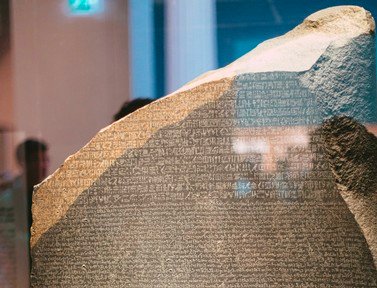Quiz Answer Key and Fun Facts
1. Experts believe that there were originally how many registers on the Rosetta stone? A register is the term for a section on the stone.
2. How many written languages were on the Rosetta stone?
3. In which section of text on the Rosetta stone are the hieroglyphs?
4. Why was it called the Rosetta stone?
5. How many of the registers (sections) of the Rosetta stone were complete when it was found?
6. What ruler ordered the Rosetta stone made?
7. When was the Rosetta Stone dated?
8. Which of these played a significant role in the decipherment of the ancient Egyptian language?
9. Who was Horappolo?
10. Which of these was not involved in the decipherment of Egyptian?
Source: Author
tnrees
This quiz was reviewed by FunTrivia editor
agony before going online.
Any errors found in FunTrivia content are routinely corrected through our feedback system.


